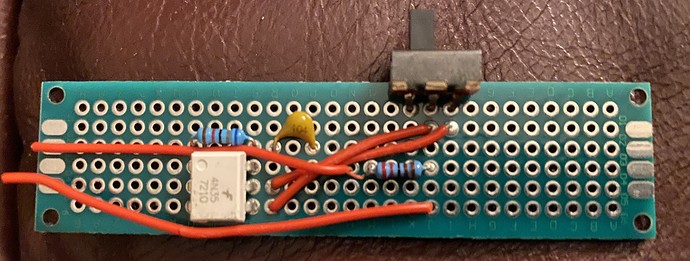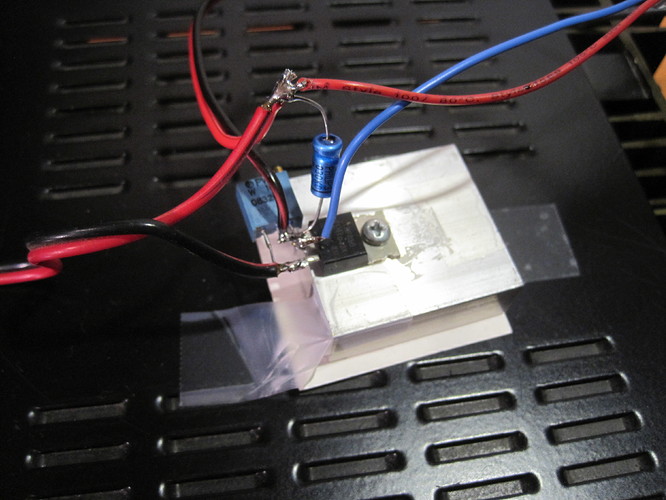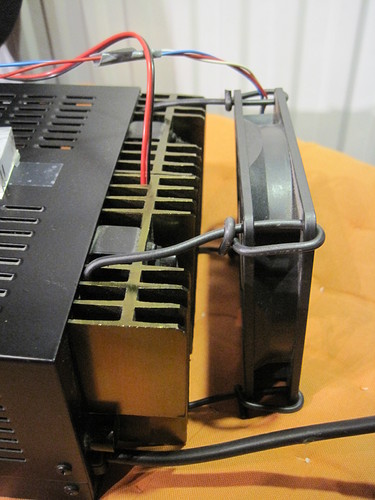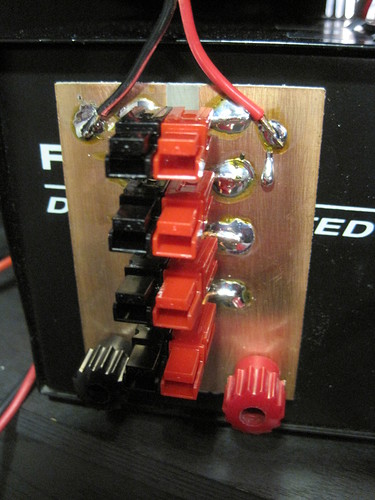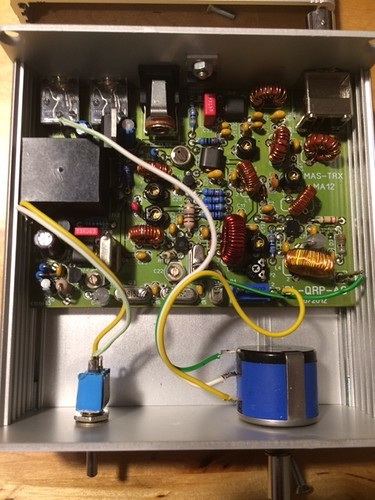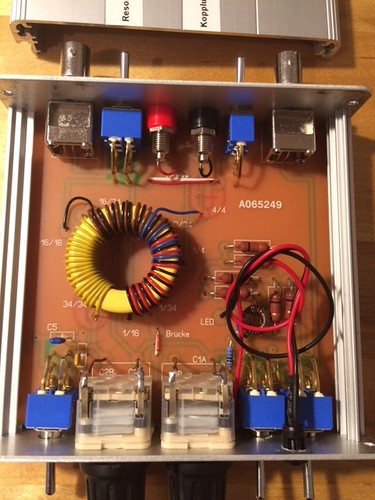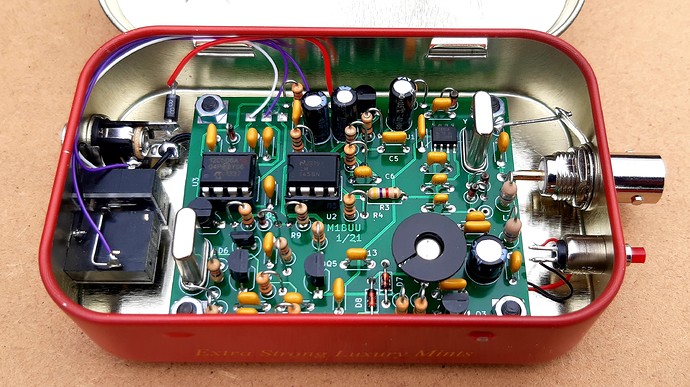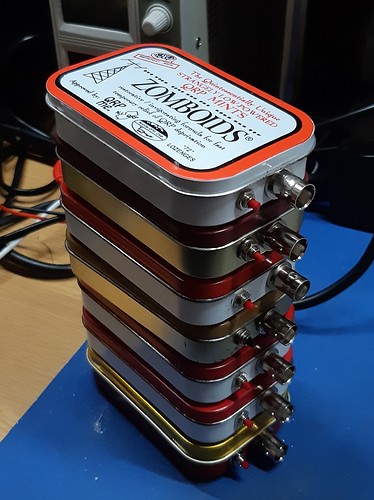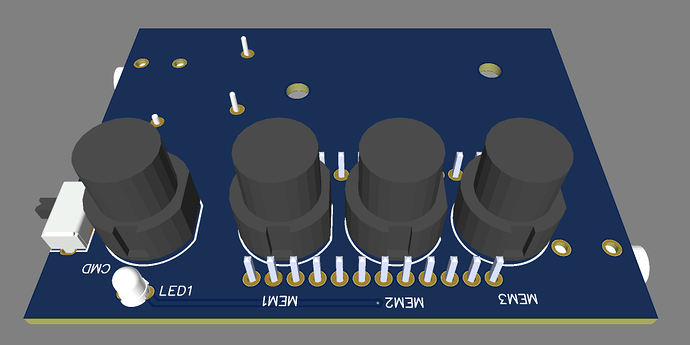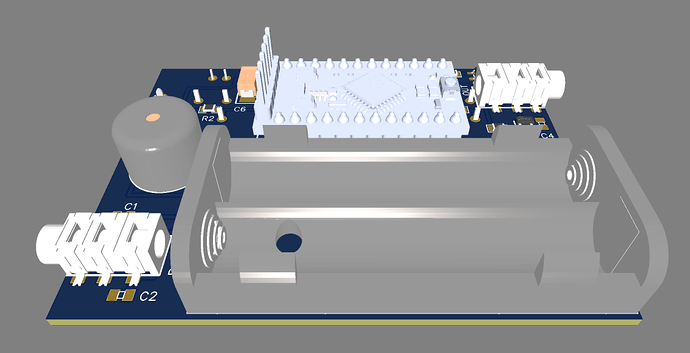Luckily it was so cold over Winter I was able to move the toilet paper from the freezer to the shed out side which made much more space for pasta in the freezer. ![]()
An 11/730 ran at 3.7 MHz with 5 MB of RAM. Even on-chip processors are faster than that today. I think the slowest Arduino you can buy runs at over 100 MHz.
I don’t know if it is possible to find a processor as slow as the 11/730 today. Maybe you could ran an ARM core in ultra-low power mode.
wunder
Got another board (and a box for printing when I convince a friend to help) finished today so thought I’d share in the thread. I’m actually addicted to making PCBs. It’s just a simple data mode audio cable type thing (original design here: Soundcard interface (including PTT) for Baofeng UV5R and other cheap handhelds ) but I was really struggling to work with it on stripboard and fiddly little wire links, so I’m just gonna get this fabbed and make it easier. It’s so cheap now I encourage folk to consider that. Nice skills level-up too.
I really want to use this for some SOTA SSTV later this year. Guess who inspired me… ![]()
https://twitter.com/markpentler/status/1364543111356162048?s=21
Original test board mid-way through construction:
Edit: FreeCAD for the box (worth learning, but the curve is a bit steep. Nice when it clicks and you “get it”). KiCad for the PCB.
Strewth. You wouldn’t get those down the G/LD lanes 
The first generation ones were 16MHz at 5V or 8MHz at 3.3V, but the rise of the STM32 chips are putting them 50MHz+.
Of course, you can still get 74 series logic if you really want to go old school on building your retro computer ![]()
You can clock a lot of Atmel chips down to 128khz (attiny) to 1MHz (the ATmega328p used for Uno boards) and lots in between for other types.
Remember, Arduino isn’t a chip, it’s the dev environment.
Edit: This is with the internal crystal too, I mean.
Edit 2: you can setup dev for STM32 in ArduinoIDE, but it’s nothing to do with the Arduino project.
One of the assignments we had in the third year of my computing degree was to write a program to run on PDP/11 A, controlling the DEC moonlander program on PDP/11 B. So the task was to query the other machine, extract the moonlander parameters, work out how to move the moon lander, what thrust to set it at and then send the new parameters to the other machine. Rinse and repeat. The pass mark was that your program got the moon lander to land without crashing. Credit was to get it to land within a certain distance of the McDonalds outlet right there on the moon. Distinction level was to get it to land within that tolerance but within a certain time of having control handed over… etc. one of the most interesting projects in the whole course. And that assignment only lasted 3 weeks, I was working a full time job at that time too. The programming was in PDP/11 assembler of course.
Some time later I worked at a place using Decsystem 20s for their principal admin systems, finance etc. The occasional (or frequent?) crashes were always followed by a message to each terminal from the PDP/40 front end, saying “Decsystem 20 not running”. That message was inevitably screen printed onto Tshirts worn by IT staff when out jogging at lunch time…
Banner pages for printout cause flashbacks of various sorts.
Andrew VK1DA/VK2UH
I’m getting worried because whilst only not quite 40 years ago since I was at Uni I cannot remember if the big DEC (on Red Route @g8cpz) was a DEC-10 or a DECsystem20. I did a few undergrad things on it but it’s all faded from clear memory. Should have used paper tape not 9 track tape to store those memories!

Don’t remember which DEC, if I ever knew. I do remember phoning down from the student lab a few times when there was a problem [e.g. with the line printer] and the high priests who looked after it would answer the phone “Engine room here” barely audible above what sounded like a Victorian pumping station.
I started at Hatfield Poly a couple of years after they had decommissioned their DECsystem-20 in favour of a VAX cluster whose model numbers I really don’t recall. By all accounts the '20 was mourned and there is still stuff on t’internet about it.
Each year the terminal rooms evolved, this would have been 1988-1991, to start the room I went to most frequently was always warm, full of VT terminals, and just a very happy place to be. I missed out on the cacophony of mechanical terminals - we had an ASR teletype at school but that was in a locked room and access was restricted (due to the phone line hook up to Luton College of FE). Obviously the terminal room was most inviting when it was cold outside, which I’m sure was ubiquitous at the time across the world at Uni’s and certainly picked up in the Infocom Adventure The Lurking Horror. I can genuinely say I don’t think I ever visited the computer room in the three years I was there. We started on VAX Pascal first year programming, I couldn’t wait to move on to C. We did have to PRINT/LIST our programs and collect green-ruled paper from bins, it was that era. As it happens VAX Pascal is an amazing language - if you’re not a language purist you can program VAXen to do pretty much anything with it.
The ironic thing is I couldn’t wait to move on to Unix and C. Then I ended up working at Cybertek Corporation (yes it was really called that) a software house in Hoddesdon, Hertfordshire. I somehow wrangled a 1st class degree and found myself in the ridiculous position of not having even contemplated working - missing all the milk rounds etc, I have no idea what I was thinking. I somehow landed a job there however. Guess which team I got assigned to - yes, the VAX/VMS porting team. It really is ironic that I seemed to spend most of my working like trying to get away from DEC gear only to start collecting it a few years later.
Such is life. Then I discovered amateur radio, and everything else suddenly felt a bit like I’d been wasting my free time up to that point.
Mark
I think the 20 was just a souped up 10, maybe a new name badge and few more bytes of RAM. The VAX put them out to pasture.
You wouldn’t want to use tape. We had backup tapes containing a billing database stored for safety by a local bank and after some time someone thought to try reading some of the tapes. The recent realignment of the tape drive meant that the previous year’s backup tapes were just souvenirs. All unreadable by a correctly aligned drive.
Which reminds me, wonder how many people have a proper backup schedule for their home computer and laptop? And is the backup on removable media and stored in a different building?
After a power surge that destroyed the motherboard and the controller on the HDD we recently invested in UPS devices. Once you start catering for all kinds of disaster, you never finish…
Andrew VK1DA/VK2UH
Different coloured boxes… orange not blue and they ran TOPS-20 not TOPS-10 but essentially the same.
As the 10/20 user’s T-shirts used to say when the VAX was announced: “If it’s not got 36-bits you’re not dealing with a full DEC”.
My latest lockdown project was adding a fan to the linear power supply in my shack.
When I did a long run of CW QSO’s at 100W, a strange smell started coming from under my desk … in case you readers have any doubt, the smell came from the PS ! ![]()
I found a very simple circuit here
I took a 10k NTC resistor (there is one in every laptop battery pack, they look like two thin wires with a “drop” of plastic at the end), and a 10k multiturn trimmer (not 50k).
The FET used was an IRF830, but I guess any IRF 5xx will work just fine.
The FET was mounted on a heatsink, but it never gets warm, so it’s probably overkill.
I still have to find a small box to house the circuit.
I didn’t want to drill holes in the heatsink or anything (and being lazy …), so I simply mounted the fan with some heavy house wiring (2.5mm²) which I shoved behind the heatsink. I made some zig-zag in the wire to make it sit firmly.
The NTC is also just hanging between the heatsink ribs.
I adjusted the trimmer so that the fan is OFF when the PS is switched on.
When I run my IC-7300 in RX for a while, drawing 0.7A, the fan comes on very slowly. Speed increases as needed, but it never makes any noise.
The PS stays much cooler than before.
Oh yes, and if there is a smell now, it must have some other source … ![]()
At the same time, I made a “quick and not so dirty” 4-way PowerPole splitter on the front.
73,
Luc - ON7DQ
My project
It has always appealed to me to have a transceiver with as few components as possible and also to participate in the qrp-minimal-art-session. …as a SOTA - activator.
Unfortunately, I am not in the mood to develop something like this myself. But there are kits.
My cw-trx has 89 components (without housing). The coil winding is particularly tricky.
And while I was at it, I also built the antenna tuner.
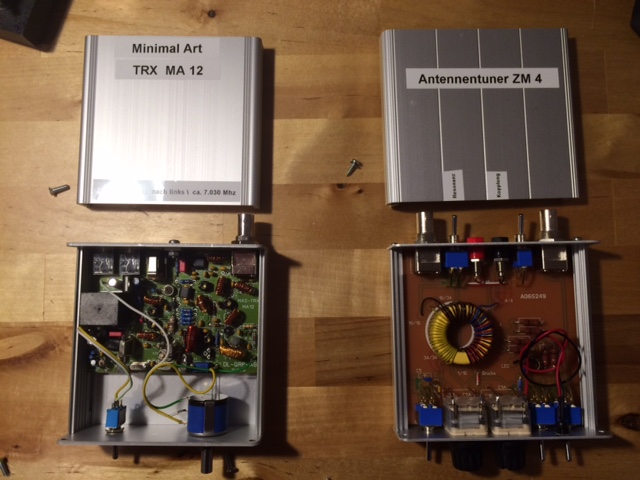
73 Armin
Ha. I was at Hatfield Poly in 1990. I remember some ancient machines stuffed at the end of a room full of A0 drawing boards and half a dozen ‘things’ that run DOGS CAD.
My lockdown project is to come out the other side sane and healthy. Some say this would be an improvement! 
Love the customised label
The tin was a gift from Rex, W1REX, he had a limited number made.
Hi,
Well, not really a lockdown project, as we aren’t in severe lockdown… It’s more a retirement project, as i’m now retired… ![]()
I started a small project : SOTA CW keyer with memories…
Target, a small self powered CW keyer with 3 programmable (on the field) memories.
Low power consumption
Internal monitor
One keying line + one PTT line (or 2 keying lines)
As small as possible.
It’s based on K3NG’s Keyer which is a masterpiece of software.
The breadboard prototype works perfectly. It consumes almost nothing when not in use. It doesn’t even need a power switch, but i’ve added one as it could be accidently activated while carried in a rucksack.
Powered with 2 AAA batteries that can be found everywhere.
The case is a TEKO A2 ( 57x72x28mm)
Here first 3D views of the project.
I’m waiting the components before ordering the PCBs.
73, Patrick.
